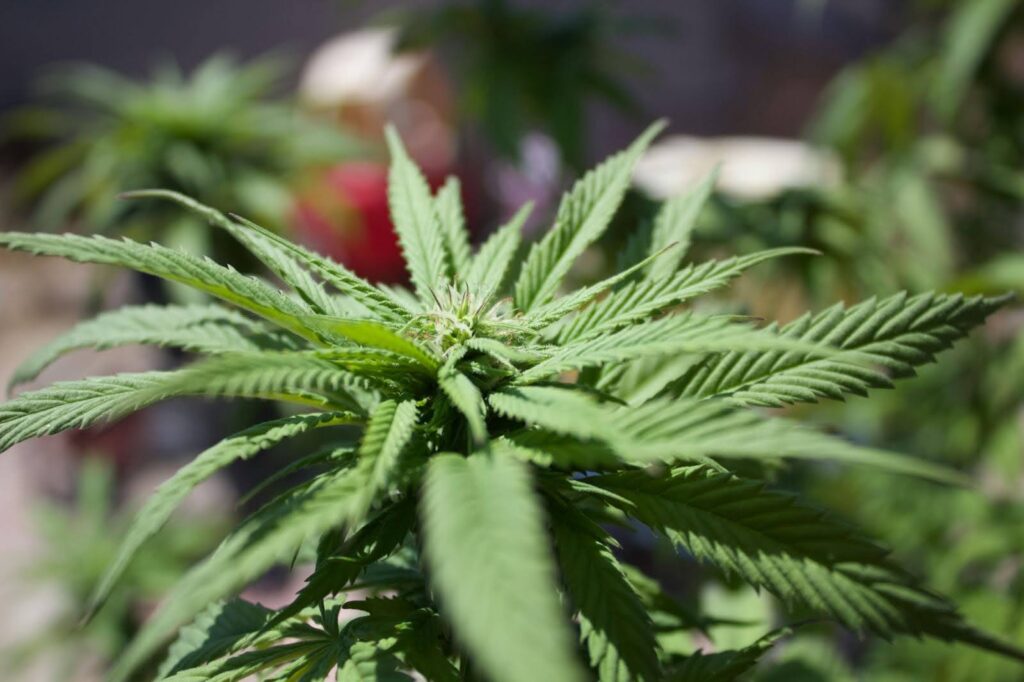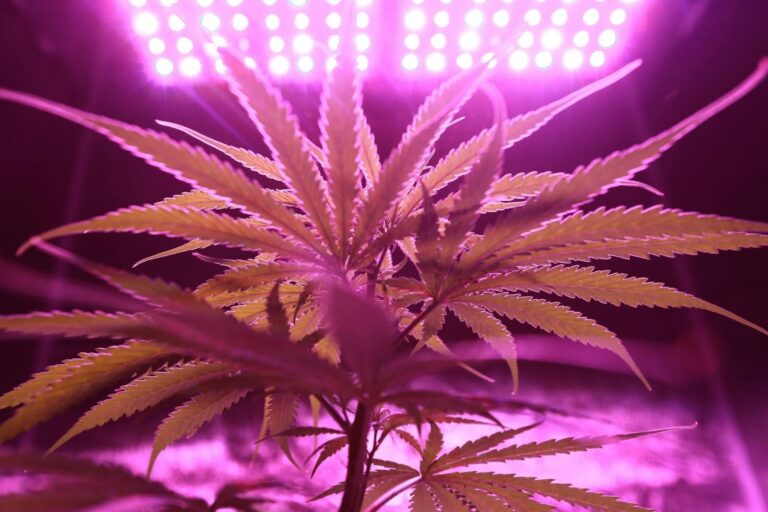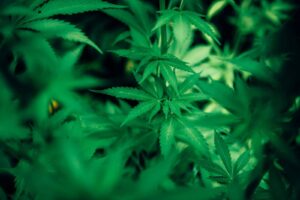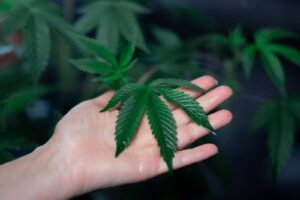Are you failing to unlock the full potential of your cannabis plants? The temperature could be the missing piece of the puzzle. It’s the silent force that governs plant development, impacting photosynthesis, nutrient uptake, and overall vigor.
Temperature control is a technical necessity and the key to unlocking your plants’ full genetic potential. It is essential for optimizing growth, yield, and overall plant health.
Whatever the indoor or outdoor cultivation methods, the optimal temperatures will ensure crop harvest is the real deal instead of ordinary production.
The vital role that temperature plays during the cultivation of the Cannabis plant calls for mastering in perfecting techniques.
Importance of Temperature in Cannabis Growth
Temperature is more than a number on a thermostat. It is an essential part of every activity involved in the process of growing cannabis, which affects growth, yield, and health. Temperature management has significant impacts on the following key areas:
- Photosynthesis Efficiency: Temperature affects how efficiently plants convert light into energy, which is the foundation of growth.
- Metabolism Regulation: It determines how efficiently plants utilize nutrients, thus impacting their vigor in general.
- Transpiration Rates: Plants control water movement within their systems, and a stable temperature range prevents the loss of too much water or water due to nutrient imbalance.
- Nutrient Uptake: A specific range of temperatures will optimize absorption from the root zone, including essential minerals.
- Enzymatic Activity: Enzyme function controls temperature, affecting the metabolic pathway that supports growth.
- Stress: Supporting optimal temperature reduces stress on the plants to direct energy into growth and yield rather than survival mechanisms.
- Bud Development: In flowering stages, strict temperature control prevents bud rot and maximizes resin development, leading to higher-quality harvests.
Now, let us understand the optimal daytime temperature required to cultivate cannabis.
Optimal Daytime Temperature For Cannabis
Maintaining the appropriate temperature during the day is critical for the success of your cannabis growing. Daytime temperatures in the range of 75-86°F (24-30°C) support many essential processes that directly affect plant health and yield. Here’s why this range is so important:
- Supports Photosynthesis: Temperatures in this range enable plants to efficiently convert light into energy, driving crucial metabolic processes necessary for growth.
- Promotes Structural Development: Proper temperatures facilitate the structural growth of the branches and leaves, which allows them to grow healthily and robustly.
- Helps Transpiration: Daytime heat accelerates the potently ideal rate at which water is moved and evaporated from a plant’s surfaces, which allows control of internal cooling and hydration.
- Improves Nutrient Transport: With effective transpiration, nutrients are moved through the plant without any obstruction, thus improving overall vitality and growth.
- Prepares for Flowering: The steady temperature creates a non-stress environment that enables the plant to put energy into its transition to flowering stages.
- Optimizes Enzyme Activity: Plant enzymes work most efficiently at specific temperatures, accelerating growth and metabolic reactions critical for development.
- Prevents Pests and Diseases: The right temperature minimizes the possibility of conditions that promote pests, mold, or fungal infections, protecting the plant’s health.
- Improves CO2 Utilization: When temperatures fall within the appropriate range, a plant will soak up more carbon dioxide, the essential component to photosynthesis; this increases its yields, and will generally be healthier.
Want to boost your cannabis yields? PlanaCan tracks every harvest, linking key decisions to results. Balanced daytime temperatures reduce stress, promoting healthier growth and higher yields. With all your data in one place, PlanaCan helps you maximize efficiency and profits.
Now, let us discuss the optimal nighttime temperature requirements for cannabis.
Optimal Nighttime Temperature For Cannabis
Nighttime is when your cannabis plants rest and shift their energy toward internal and foundational processes. Maintaining temperatures between 64-75°F (18-24°C) provides an optimal environment for several critical activities:
- Encourages Root Development: Cooler nighttime temperatures promote robust root growth, essential for anchoring the plant and supporting nutrient uptake.
- Supports Nutrient Absorption: During the night, plants channel their energy into nutrient uptake and allocation, which allows them to grow and flower.
- Induces Flowering Process: When the temperature drops slightly, the plant switches from vegetative to flowering cycles, especially for photoperiod strains. The flowering stage is essential for producing buds with the maximum content of cannabinoids and terpenes.
- Reduces Stress: Consistency in nightly temperature avoids environmental stress, allowing plants to concentrate on recovery and preparation for the following light cycle.
- Improves Metabolic Efficiency: Nighttime allows the plant to utilize energy to repair cellular damage and enhance the immune system, ensuring long-term health.
- Regulates Hormonal Changes: Cooler temperatures help control the hormonal fluctuations required for flowering and fruiting, balancing growth throughout different plant systems.
- Promotes Better Cannabinoid Development: Controlled nighttime temperatures ensure the consistent and optimized production of cannabinoids and terpenes, improving the final product’s quality and potency.
Maintaining these temperatures consistently creates the conditions necessary for smooth transitions between growth phases, ensuring your plants reach their full potential at every stage of development.
Next, we will understand the temperature requirements at various cannabis growth stages.
Temperature Requirements by Cannabis Growth Stage
Different growth stages require specific temperature ranges to ensure the cannabis plant grows to its maximum potential and remains healthy. Each stage has particular needs, which, if met, will optimize development and yield:
- Clones:
- Temperature Range: 70-85°F (20-30°C).
- Key Needs: Clones require warm temperatures and high humidity for root development. These conditions increase the cellular activities necessary for root formation and minimize transplant shock.
Proper lighting conditions, such as soft and indirect light, can complement this phase by avoiding excessive stress on tender plants.Additionally, rooting hormones and a sterile environment support the establishment of roots.
- Vegetative Stage:
- Temperature Range: 70-85°F (20-30°C).
- Key Needs: This stage thrives on consistent warmth, which drives photosynthesis and metabolic processes. Vigorous vegetative growth requires steady energy production to support leaf, stem, and branch development.
Ensuring good airflow within the grow space is also crucial, as it strengthens stems and reduces the risk of mold or mildew.Dense vegetative development is obtained with optimum temperatures and suitable nutrient application, mainly using nitrogenous fertilizers.
- Flowering Stage:
- Temperature Range: 65-80°F (18-26°C).
- Key Needs: The temperature would decrease slightly, reducing humidity, which is critical to preventing mold and mildew on buds. Cool conditions also increase the production of terpenes and cannabinoids, increasing the final product’s aroma and potency.
Regulating nighttime temperatures more closely is essential to maximizing bud quality, as extreme drops can lead to stress or hermaphroditism in the plant.
Dense, resinous flowers have light schedules and adequate levels of potassium and phosphorus.
Adapting to these temperature requirements at each growth stage ensures that plants are healthy and primed to produce higher yields and better-quality buds.
Growth Stage | Temperature Range | Key Needs |
Clones | 70-85°F (20-30°C) | High humidity and warmth for root establishment; reduce transplant shock. |
Vegetative | 70-85°F (20-30°C) | Steady warmth to drive photosynthesis and metabolic processes; supports structural growth. |
Flowering | 65-80°F (18-26°C) | Lower temperatures reduce mold risk; and enhance terpene and cannabinoid production. |
So, what are the effects of extreme temperatures on your cannabis plant? Let us find out.
Effects of Temperature Extremes On Cannabis
Extreme temperatures can do major damage to your cannabis plants: they can stifle growth, compromise health, and significantly reduce yield potential. Here’s how various temperature extremes impact cannabis cultivation and what you can do about them:
High Temperatures:
Stunted Growth: Overheating causes the plant to divert its energy to evaporation for cooling, leaving less energy for growth and development.
Pest Infestations: Hot environments easily attract pests. Spider mites, for example, thrive in very dry, hot conditions and reproduce rapidly, usually destroying plants.
Reduced Potency: Heat can break down cannabinoids and terpenes, reducing the quality and aroma of your harvest.
Leaf Damage: Heat stress often manifests as curling leaves, yellowing, or burnt edges, indicating the plant’s struggle to regulate its internal temperature.
Cold Stress:
Halted Growth: Low temperatures retard metabolic processes. Growth is stopped, and the plant becomes less productive.
Disease Susceptibility: Cold conditions embolden pathogens like mold and mildew in plants whose immune systems are weak.
Poor Nutrient Uptake: Cold temperatures could reduce the performance of root systems, resulting in nutrient deficiencies, which are apparent through discoloration or drooping leaves.
Flower Quality Issues: Cold stress can prevent bud formation during flowering and reduce resin production, directly affecting potency and yield.
Signs of Stress:
Early detection of stress signs can help prevent the long-term damage of your cannabis plants. Look out for the following key indicators:
- Curling, yellowing, or discolored leaves, may indicate heat stress, nutrient imbalances, or overwatering.
- Slowed growth or wilting due to inadequate water, extreme temperatures, or root damage.
- Dry or brittle foliage may indicate low humidity levels or extended exposure to excessive heat.
- Brown or scorched leaf edges indicate light burn or heat stress.
- Purpling of stems or leaves, which can result from temperature fluctuations below the ideal range, especially at night.
- Drooping leaves could be indicative of waterlogging or dehydration depending on soil conditions.
Drooping leaves? PlanaCan helps diagnose whether they’re due to waterlogging or dehydration by keeping all your data in one place. With PlanaCan, optimize growth, refine methods, and boost yields for greater profits.
Mitigation Strategies:
Effective management of extreme temperatures is the key to preventing stress and optimizing plant health. Some practical strategies for this are given below:
- Fans, shade cloths, or air conditioning can help keep your growing space cool so your plants are not exposed to excessively high temperatures.
- Invest in heaters, heat mats, or insulating materials to safeguard against cold temperatures, especially when the temperature may drop at night or during seasonal changes.
- Oscillating fans or ventilation systems circulate the air to prevent heat pockets. The temperature should be distributed evenly throughout the growing space.
- Temperature controllers or automated systems should regulate heat and cooling appliances with minimal human intervention to maintain a uniform environment.
- Keep in mind the microclimates found in your grow area. Areas close to the walls or near lights sometimes have different temperatures requiring localized adjustments.
- Use thermal curtains or reflective materials in outdoor or greenhouse setups to moderate temperature fluctuations that might cause abrupt spikes or drops in heat.
- Add backup systems like portable generators or emergency heaters for sudden power cuts or extreme weather conditions.
- Regularly calibrate thermometers and hygrometers to accurately determine the temperature and humidity, thus quickly catching any environmental problem.
So, how do you balance temperature and humidity for optimal growth of your cannabis? Let us understand.
Balancing Temperature and Humidity For Cannabis Growth

Temperature and humidity can never be entirely separate; these factors tend to be interlinked such that a variation in one automatically leads to another. Balancing both is what creates thriving and growing conditions.
These elements work together to regulate transpiration, nutrient uptake, and photosynthesis, which are crucial for plant growth. An imbalance can cause stress, reduce yields, or lead to crop failure if not well managed.
Here’s how to achieve and sustain this equilibrium:
- Avoid Excessive Transpiration: The right temperature control manages the transpiration rate. Plants dry up very quickly in their leaves when the temperatures get too high, causing water deficit and mineral imbalances.
On the other hand, lower temperatures delay transpiration which creates excess moisture leading to increased risks of molds.
- Monitoring Humidity Levels: Utilize hygrometers or digital monitors to track humidity levels consistently. Young plants prefer higher humidity levels (60-70%) while flowering plants thrive under lower humidity (40-50%) to prevent mold risks.
- Maintain Stability: Avoid drastic temperature fluctuations, which can stress plants, curl leaves, or stunt growth. Plants are generally better at adjusting to gradual changes that prevent shock.
- Optimizing Vapor Pressure Deficit (VPD): VPD is the relationship between temperature and humidity that affects plant transpiration and nutrient uptake. Keeping VPD within the optimal range for your plant’s growth stage ensures a balanced environment.
- Ventilation and Airflow: Proper airflow ensures that the temperature and humidity are evenly distributed throughout the grow space. Oscillating fans and exhaust systems can prevent localized hotspots or areas of stagnant air.
- Use of Dehumidifiers and Humidifiers: A dehumidifier can lower moisture levels inside during flowering. A humidifier will increase humidity to support seedlings or clones. Automated equipment helps maintain stable levels with little human input.
Conclusion
Proper temperature management is the backbone of successful cannabis cultivation. Understanding the ideal temperature ranges for each growing phase and developing strategies to achieve these conditions will ensure the success of your plants.
PlanaCan simplifies the cultivation process, allowing growers to achieve consistent results easily. You can track every process step, from planting to harvest, which can be outlined using customizable templates tailored to specific strains and cycles. Tasks are scheduled effortlessly with just a few clicks, ensuring an efficient and streamlined workflow. It also provides a clear timeline for all cultivation activities, enabling growers to plan months while managing daily tasks. Centralized information and flexibility empower growers to adapt to dynamic needs, ensuring no task is overlooked and cultivation goals are consistently achieved.
Schedule a free call today to discover how PlanaCan can revolutionize your growing experience and maximize your success.




